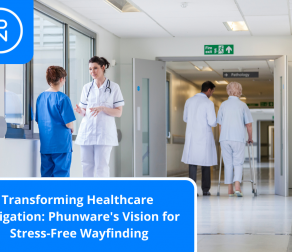If you’ve visited the doctor or scheduled a medical appointment in the last year, you’ve likely noticed how much more automated the processes has become. With digital innovation on the rise across the board, healthcare is constantly finding challenges in keeping up with mobile trends. In this blog, we will explore how the ever-evolving conveniences of mobile technology, including Telehealth and mHealth, is breaking the mold of yesterday’s conventional healthcare methods to better serve the patients of tomorrow.
As we touched on in our previous blog, convenience is at the forefront of a consumer’s decision-making process. Scheduling, proximity and wait times all factor into what patients consider a convenient experience. On average today, a medical appointment takes about 2 hours with only 20 minutes being time spent with a doctor. This is understandably frustrating to patients and is not an effective use of time!
- 77% of patient comments about wait times are predominantly negative
- 20% of patients report they will switch providers if forced to wait too long
With more and more non-traditional methods becoming available, healthcare organizations are at a crossroads; either adopt these new methods or have disruptors take control of the industry. NRC Health reported that since 2006, retail clinics have grown by 500%, which means more than 30% of U.S. households are within a ten-minute drive. In addition, 30% of patients have come to rely on retail clinics for their primary care and 61% are comfortable with at-home testing options.
One way traditional healthcare organizations can improve convenience and combat the use of retail clinics is through telehealth. Telehealth offers many benefits including accessibility, efficiency and flexibility for both patients and staff. According to an Advisory Board report, 77% of consumers say they would consider seeing a provider virtually and 19% already have.
Some early adopters have already begUn implementing telehealth within their organizations. Bernard Tyson, CEO of Kaiser Permanente, reported that in 2016, 52% of patient visits were conducted through its telehealth platform. In the last 5 years, 80 specialties have been authorized to utilize a similar platform. Kaiser also recently saw success with a cardiac rehabilitation telehealth program with more than 87% of the patients completing the virtual care program.
- 75% of the virtual visits were for prescription medicine, pediatrics, dermatology, after-hours care or psychiatry
- 70% of the primary care visits were conducted with the patient’s primary care provider
With the added convenience of telehealth, patients are less likely to delay seeking medical care. One telehealth program in Houston reported a 6.7% reduction of unnecessary emergency department visits and a $2,468 cost savings for each emergency visit avoided.
Telehealth is not the only trend taking the Healthcare world by storm. Along with the immense growth of clinician-directed virtual health options, mobile devices have seen a tremendous rise in health-related and self-care apps. Consumers have never had more access to more fitness or wellbeing resources right at their fingertips, with over 100,000 health related apps available on the market.
So, what are all the different ways that people are using them? mHealth apps serve as virtual diaries with which users can track everything from steps to individual meals, their exercise regimens, even sleep patterns as well as mindfulness. People are even able to monitor and track their health and manage chronic diseases and disorders.
How many of you know someone who tracks their daily activities with their phones or wearable accessories, or someone with diabetes who is able to track their blood glucose levels through an app? Never before have consumers been more empowered to take their everyday health into their own hands.
In 2017, mHealth captured $23 billion in revenues and was estimated to grow at a rate of 35% annually. Analysts from Goldman Sachs also estimate the potential overall savings from digital healthcare at $305 billion, with up to $200 billion coming from improvements in chronic disease management.
At the end of the day, the goal of any healthcare organization is to provide the highest quality of care, preferably preventative, to their patients in the most convenient way. As technology continues to evolve, transformation in health systems both at home and abroad will need to follow suit. As the challenges and needs evolve from country to country, healthcare organizations, professionals and patients must be willing to adapt as they adopt new technologies, learning and adjusting as they go.










